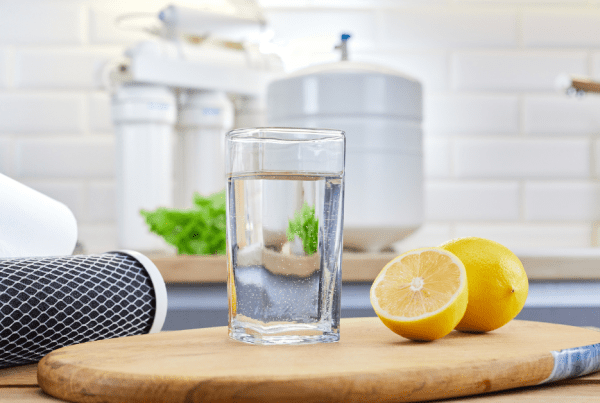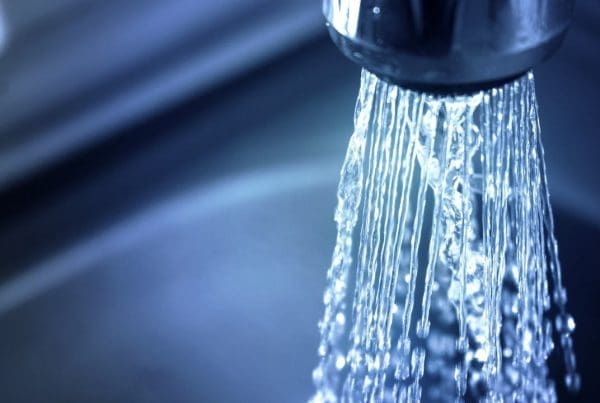-
Reduces Chlorine in Tap Water
Most public water supplies use chlorine and chloramines to disinfect their water before sending it to customers. It’s also used in swimming pools. The EPA regulates the amount of chlorine in city water to ensure it is safe for consumption. But “safe” doesn’t always mean “best”. Chlorine can affect the taste and smell of your water, and some people may experience dry skin or other sensitivities. Reverse osmosis removes chlorine and chloramines so that you can drink clean water that is better for you.
-
Filters Out Harmful Disinfection By-Products (DBPs)
Reverse osmosis can also remove disinfection by-products (or DBPs). These form when chlorine or chloramine reacts with natural organic matter in the water. By-products include trihalomethanes, haloacetic acids, and other chemicals. These DBPs taste bad, smell bad, and are linked to digestive issues and increased cancer risk.
-
Protects Against PFAS, PFOA, and ‘Forever Chemicals’
Both PFOA and PFAS are toxic and have many health concerns associated with them. PFAS, PFOA and others like them are commonly called “forever chemicals” as they resist breakdown. That means they stick around in both the environment and in our bodies. Long-term exposure has been linked with higher risks for certain cancers and developmental defects during pregnancy (even at low doses). Reverse osmosis removes these harmful contaminants from your drinking water.
-
Strips Out VOCs Like Benzene and Formaldehyde
VOCs (volatile organic compounds) can be found in paints, wood preservatives, cleaners, and other household products. Some common VOCs include formaldehyde, benzene, and trichloroethylene. Reverse Osmosis is one of the best ways to remove these harmful substances from your tap water. The reverse osmosis process forces water through a membrane with pores too small for VOC’s to pass through.
-
Reduces Heavy Metals Such as Lead, Mercury, and Copper
Lead, mercury, and copper can be toxic to humans at high concentrations or through prolonged exposure. RO will greatly reduce these from your drinking water. RO does not remove all heavy metals though. This usually is not an issue unless you live in a highly industrial or polluted area. If you want to know exactly what is in your water, we recommend a water analysis.
-
Produces Water That’s Cleaner Than Bottled Water—Without the Plastic Waste
Using a reverse osmosis system in your home is not just good for you, but also good for the environment. Since 2013, bottled water sales and consumption in the US grew to roughly 46 gallons per person. All that plastic amounts to billions of tons of waste. That is because almost all the plastic ever made still exists in some shape or form. By using reverse osmosis and a reusable water bottle, you could reduce that waste.
Reverse Osmosis is a better way
Reverse osmosis is a great way to purify drinking water. It is one of the best options for people who want to drink healthier. If you have questions about RO, contact one of our water treatment specialists at C and J Water.






